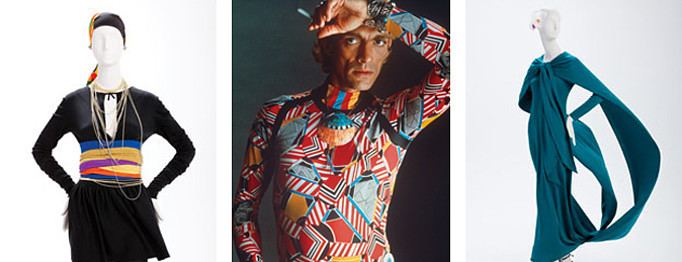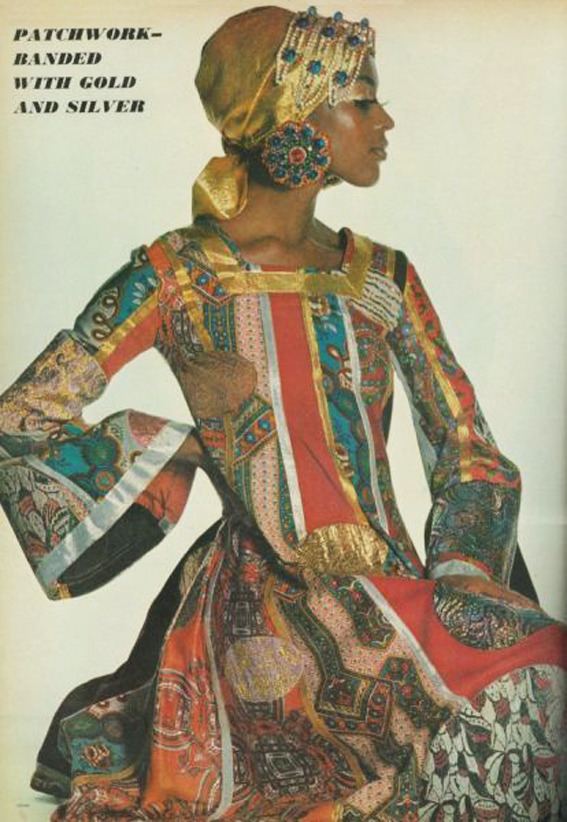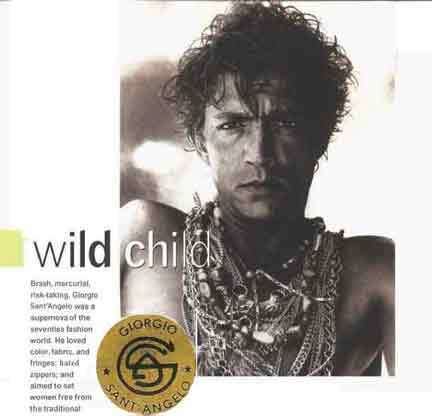Nationality American Occupation Fashion designer | Name Giorgio Sant' | |
 | ||
Awards Coty American Fashion Critics award, 1968, 1970Council of Fashion Designers of America Award, 1988 Died August 29, 1989, New York City, New York, United States | ||
Giorgio di Sant' Angelo (Jorge Alberto Imperatrice), commonly known as Giorgio Sant'Angelo, (1933–1989) was an Italian/Argentinian fashion designer based in the United States. He was known for creating ethnic-inspired looks early in his career, for which he won the prestigious American Coty Fashion Critic's award in 1968 and in 1970. Using fabrics like tie-dyed chiffon, leather and cotton, he created romantic clothing that reflected the hippie culture of the era. But his innovative use of knitwear, which he continuously developed throughout his career, was often his signature and was an influence on other designers.
Contents

Early years

Sant'Angelo was born as Jorge Alberto Imperatrice in Rosario, Argentina, from a middle class hard working family. Son of Domingo Antonio Imperatrice and Leila Ratti, he had a smaller brother, Hector Daniel Imperatrice (born 10/4/1945). He later in his lfe told that was nobleman in Florence, Italy, as the son of a Florentine count.

He received a degree in architecture at the University of Florence, then later studied industrial design and ceramics. He also studied with Picasso for six months, as the result of winning an international ceramics competition, sponsored by the French government. Picasso encouraged his student to "trust his own restless creativity and to keep on trying new artistic ventures," and Sant'Angelo created an animated film cartoon and submitted it to Walt Disney. Impressed by the film's inventiveness, Disney brought him to Hollywood and gave him an apprenticeship. But unable to speak English well, Sant'Angelo was lost in the vastness of Los Angeles and quit after 15 days.
New York

Sant'Angelo moved to New York City after his experience at Disney. He first worked as textile artist, and later worked in interior design. For fun, he started making Lucite and plastic jewelry. Catherine de Montezemolo first noticed the jewelry, then later Diana Vreeland, who started featuring it in Vogue magazine. This set his career into motion. Ms. Vreeland recognized the talent that Sant'Angelo showed, and hired him as a freelance stylist. It was out of this collaboration that some of the most iconic fashion photographs of the 1960s were taken. Shots like the model Verushka wrapped in fur in the desert, or psychedelic flower makeup around one of Twiggy's eyes.
Seventh Avenue
Sant'Angelo opened his own ready-to-wear business in 1966. He experimented with knits, and developed new fabrications with textile mills like DuPont. He also collaborated with textile converters like Crantex, to create his own prints, and leather makers like Calderon, for his accessories. He cited various native and ethnic cultures as the inspiration for his collections, like the American Indian or the Bohemian Gypsy. But his most important contribution to modern women's clothing at the time was his liberating construction techniques and his use of stretch fabrics. He rejected the traditional shift with the zipper-up-the-back, and instead, designed clothing that wrapped, tied, hung or clung to the body. He didn't simply design clothes, he ornamented the body and made fantasy wearable. He made couture pieces for celebrities and entertainers as well. Eventually, he started to license his name and expand into cheaper, more affordable clothing. The first line was called Sant'Angelo 4U2, which were less expensive versions of his fantasy pieces. Then there was the 'Marjer Parts' line, which was also more affordable, but more trend-influenced. Later, he dropped the 'di' from his last name and licensed out his name as Giorgio Sant'Angelo. Unfortunately, much of that clothing did not have his own hand involved, and instead, was overly commercial and did not possess his innovative signature. In 1976, Sant'Angelo befriended guitarist Michael Laucke, whom he met through jewelry designer, philanthropist and former fashion model Elsa Peretti, and Sant'Angelo frequently hired Laucke to play at the launching of his new lines in New York, setting "the pace for a more subdued Sant'Angelo".
Comeback
In the mid-1980s, Sant'Angelo added the "di" back to his last name and continued to design his high end signature line. Made almost entirely out of stretch knits, critics hailed it, confirming the return of his influence. The versatile, wrap stretch pieces of clothing, in unique materials, colors and patterns, proved an antidote to the overly tailored styles of the time. Unfortunately, di Sant'Angelo died in 1989, so his comeback was short-lived. But his legend continues in the minds of modern-day fashionistas, with designers like John Galliano and Marc Jacobs citing him as an influence. He was given a plaque on the 7th Avenue walk of fame along with his contemporaries such as Halston and Stephen Burrows.
